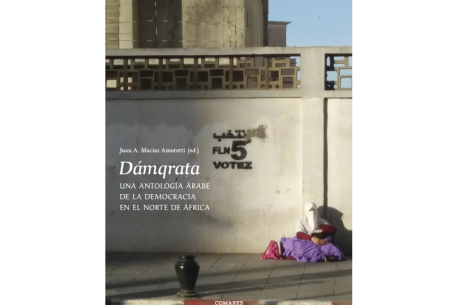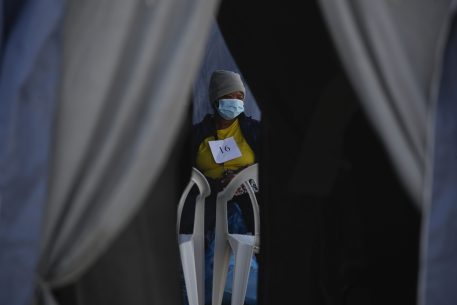Tunisia: The Next Phase
Election Day has come and gone in Tunisia, marking the end of the first transitional phase of the post-Ben Ali era and the beginning of another. The achievements during the initial interim period were considerable; the challenges facing the Tunisian polity in the coming period are even more formidable. Much will depend on how the leadership of Tunisia’s newly empowered political parties, now charged with fashioning a viable institutional framework that will enable the country’s centripetal forces to outweigh its centrifugal ones, conduct themselves. Maintaining political and social stability will also require signs that Tunisia’s economic difficulties are being ameliorated. Of course, all eyes will be focused on Ennahda, Tunisia’s long-repressed Islamist movement, and the big winner in the elections for a Constituent Assembly whose duties are to establish an interim, one-year government and write a new constitution, after which general elections are to be held again.
A few background observations regarding Tunisia’s particular cocktail of factors that have shaped its past and present are in order. Twenty years ago, Samuel Huntington had identified Tunisia as the most likely candidate among Arab states to join the “third wave” of democratization among thirty previously non-democratic states. Tunisia’s “democratic potential” included its historically rooted, well-defined national identity, socially and territorially (Tunisians, in Ernest Gellner’s memorable phrase, seem “comfortable in their own skin”); its relatively strong educated middle class, achievements in promoting the status of women, and relatively non-traumatic colonial experience, which further deepened Tunisia’s already existing openness to Mediterranean cross-currents; and a small, non-politicized military. An additional element in this mix is the fact that under its first president, Habib Bourguiba, Tunisia managed to maintain a healthy distance from radical pan-Arab currents being promoted by Egypt’s Gamal Abdel Nasser and others during the 1950s and 1960s. At the same time, of course, Tunisia’s heritage and social underpinnings were an integral part of the Arab-Islamic milieu. Taken together, these elements produced what the political scientist Larbi Sadiki refers to as Tunisia’s “syncretism”, which heralds, in his view, good tidings for Tunisia’s emerging, albeit still fragile, democracy. While being careful not to idealize Tunisia’s particular synthesis or its achievements, one can hardly dismiss them either.
Indeed, they may help to explain why the initial phase of the post-Ben Ali period culminated in a successful election. In comparison to Egypt’s post-Mubarak era, Tunisia exhibited a greater degree of constitutional legitimacy and continuity. At the same time, again in contrast to Egypt, the advocates of order and institutional continuity ultimately bowed to pressures from below, and established mechanisms for organizing the transition to competitive, multi-party elections which, while not free of flaws, ultimately proved to be successful, winning the plaudits of the international community and the stamp of legitimacy from the Tunisian public at large.
Comparisons with present-day Egypt and Algeria’s democratization process twenty years earlier are also instructive. Egypt’s upcoming elections will choose a president and parliament which will only then draw up a new constitution, suggesting that preponderant power will be in the hands of well-organized Islamist political forces cohabiting with the military establishment. Tunisia, by contrast, has established a much lengthier transitional process, in which an interim government appointed by the Constituent Assembly will run the country’s affairs for one year, while a new Constitution is formulated. Moreover, the elections for the Constituent Assembly were conducted on a basis of proportional representation, not a winner-take-all constituency basis, thus preventing Ennahda from winning a sweeping majority of seats, with the attendant consequences of severe polarization and even violence. This of course is what happened in Algeria in 1990-1991, when the Islamist FIS was on the verge of complete domination of parliament in spite of having won less than 50% of the votes cast, prompting military intervention to cancel the electoral process and plunging the country into years of horrific strife.
Ennahda’s decisive victory in elections (41%; more than 90 seats in the 217 person assembly), placed its Secretary-General, Hamadi Jebali, in line for the post of prime minister of the upcoming interim government, and confirmed anew that Islamist movements are the prime beneficiaries of the Arab Spring upheavals. Guided by Rashid Ghannoushi, Ennahda has long contended that it is genuinely committed to democracy and dialogue with other social forces, as it promotes a modernist-Islamist synthesis, modeled, it says, after Turkey’s ruling AKP party. Sadiki characterizes Ennahda’s world view as “soft Islamism.” This includes a commitment to maintaining the rights of Tunisian women as laid down by Tunisia’s personal status law, which among other things is the only one in the Arab world which explicitly bans polygamy, in contradiction to Islamic law. Nonetheless, Ennahda’s campaign also employed unabashed appeals to religious sentiment, and with great effect. And when it comes to hot button, populist issues like the Arab-Israeli conflict, Ghannushi’s language has been harsh, and even anti-Semitic, and full of praise for suicide bombers and for Hamas’s strategic goal of eliminating Israel.
Ennahda’s decisive victory was due not only to its popularity and cohesiveness, but also to the splits within the secular-left camp: the three best-known parties, the Congress of the Republic (CPR) led by comparatively well-known human rights defender Moncef Marzouki, Ettakatol (Democratic Forum for Labour and Liberties), headed by Mustafaa Ben Jaafar and Nejib Chebbi’s Progressive Democratic Party, which together garnered 32% of the vote. Another 9% went to the previously unnoticed Aridha Chaabia (“Popular Manifesto”), whose London-based Hachmi Hamdi won considerable support in poor regions of the interior, including Sidi Bouzid, where Tunisia’s Jasmine Revolution was first ignited. However, some of the seats won were disqualified on various grounds, touching off riots by angry supporters in Sidi Bouzid, who attacked a local Ennahda office and a number of government institutions. No less than 24 additional party and independent lists attained a share of the remaining seats, approximately 17% of the total.
What happens now? Ennahda’s post-election press briefing was a model of consensus, emphasizing its commitment to democratic principles and its wish to cooperate with all political parties, trade unions and other civil society bodies, praising the country’s civil servants, whose skills were vitally needed as the country moved forward, and reassuring international markets and actors. For their part, both the CPR and Ettakatol (but not the PDP) proclaimed their willingness to work with Ennahda in establishing the new interim governing authority and beginning the work on the new Constitution. Given their differing world views, establishing a sustained working relationship will be no mean feat. There is no precedent for such a durable secular left-Islamist alliance anywhere in the region.
Paradoxically, it appears, then, that Tunisia has embarked on a path of more genuine democratization and Islamization. Amitai Etzioni terms the likely outcome as being a kind of “Islamocracy”, i.e., the combining of democratic institutions and an active civil society, with some influence of Islamic law and norms on political and social life. The struggle to determine what that exact combination will be promises to be thecentral issue shaping Tunisia’s democratization experiment. Ennahda now has the chance to prove that Islamist movements are not, by definition, antithetical to democratic norms. But the path is also strewn with obstacles. The bargaining and compromises which will be required to maintain a broad-based government and achieving an agreed upon constitutional framework is likely to be difficult at times for Ennahda and even more so for its secular coalition partners, particularly since some of the latter’s supporters already believe that Ennahda is just dissimulating in its proclaimed fidelity to democracy and the equality of women. In addition, the actions of a small but provocative Salafi current, which attacks Ennahda for not being sufficiently “Islamic” has already demonstrated its ability to polarize society. Nor does the democracy “bounce” of legitimacy conferred by the elections have an unlimited time frame. People, particularly the young and unemployed, will want to see a real change for the better in their everyday lives. Developing viable economic policies that can begin providing solutions to its frustrated youthful population will be the new government’s first order of business.
As for the region, Islamist movements and more liberal advocates of reform were cheered by Tunisia’s successful elections, albeit not always for the same reasons. But while Tunisia can serve as an inspiration for those in the Arab world who seek to replace decades of dictatorship with a democratic regime responsive to people’s needs, the conditions for actually replicating the Tunisian experience do not exist elsewhere. And in Tunisia itself, the jury is still out.





